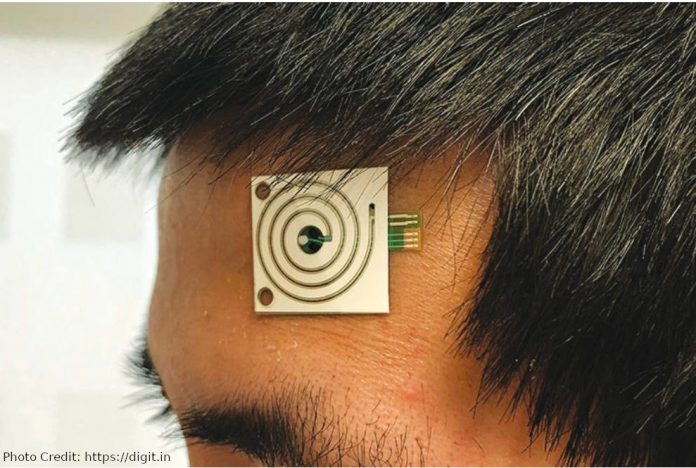
Like little children who discover the world by putting everything in their mouths, we can say that human beings experience the world through the skin. Our skin is like a million of sensors of temperature, pressure, pleasure or pain. Having many nerve endings on the skin we find a lot of information, only with the help of this sense organ.
But just as we get information from the skin, our skin also transmits information to the outside world about our state. To check if we have a high fever we touch our forehead, we blush when we have certain feelings. The sweat flows on us,when we are at the gym, indicating we have made an intense physical effort.
Wei Gao, Assistant Professor in the Department of Medical Engineering Andrew and Peggy Cherng at the California Institute of Technology, set out to find out much more about humans through their skin. In this regard he developed the concept of an electronic skin, or e-skin, which is applied to human skin to gather information.
This e-skin is made of soft rubber, very flexible, with built-in different types of sensors that can monitor information on: heart rate, body temperature, blood sugar, can determine metabolic byproducts as indicators of body health and even nerve signals that control our muscles.
It is very interesting to know that it gathers all this information working with no need of a battery, using only biofuel cells that are fed by one of the wastes of the human body.
Thus one of the important specificities of this device, is that it is autonomous. Despite others who tried all sorts of solutions with batteries, solar cells, the use of human movement, but Gao wanted to know if he could use perspiration to power this device and look, he succeeded.
Professor Gao explains that human perspiration contains high levels of chemical lactate, a chemical compound generated as a byproduct of the usual chemical processes, during physical exertion by the muscles of the human body.
Biofuel cells that are incorporated into this e-skin absorb this lactate and combine it with atmospheric oxygen resulting in water and another byproduct of human metabolism called pyruvate. During this mechanism, biofuel cells generate the electricity needed to operate the sensors but also to power an attached Bluetooth device, which has the role of transmitting the collected information.
Despite the fact that Bluetooth communication is highly energy consuming, it is more attractive for direct connectivity with medical and robotic applications.
Designing and building such a sweat-powered energy source for the e-skin was not the only challenge, says Professor Gao. The most difficult thing to do, was to get a surplus of energy, far above the high consumption due to the two built-in functions, the sensor and the transmitter.
The biofuel cells were obtained from carbon nanotubes, impregnated with a cobalt and platinum catalyst and a composite mesh containing an enzyme specialized in the breakdown of lactate.
These biofuel cells can generate a continuous and stable power, with higher values of the order of milliwatts per square centimeter in a few days of perspiration.
Professor Gao’s plan is to develop a variety of sensors to be incorporated into this e-skin to serve several future purposes. He wants this system to become a platform for other projects and a human-machine interface.
Using this platform of e-skin, the molecular information and vital signs collected can certainly be used to optimize the next generation of prosthetics, which are currently testing various ways to help those with loco-motor disabilities.



